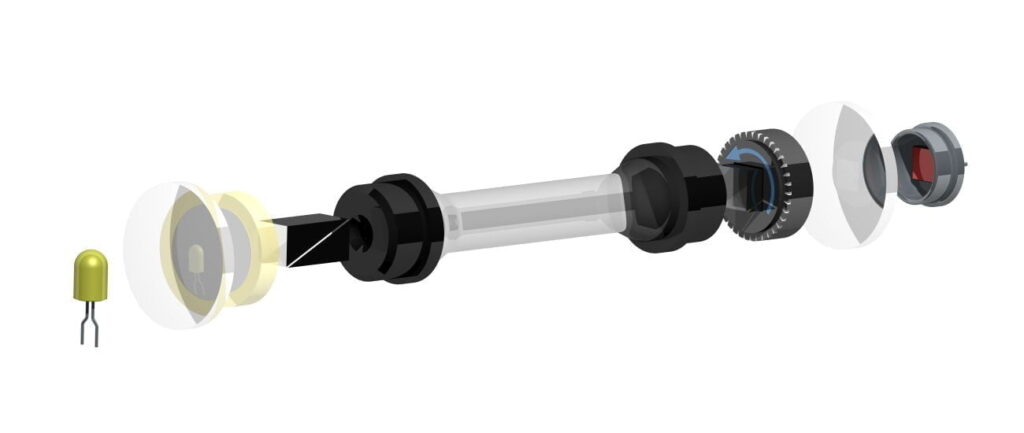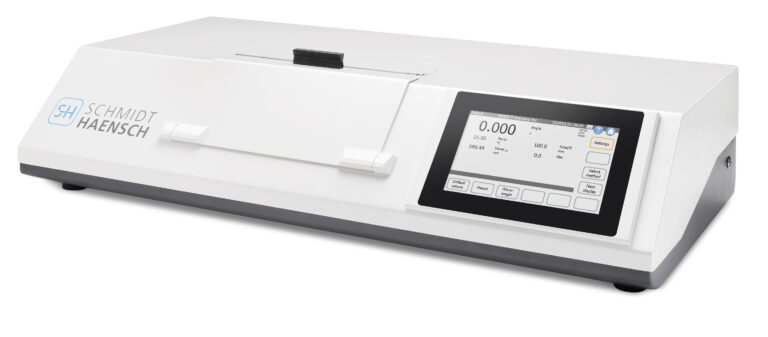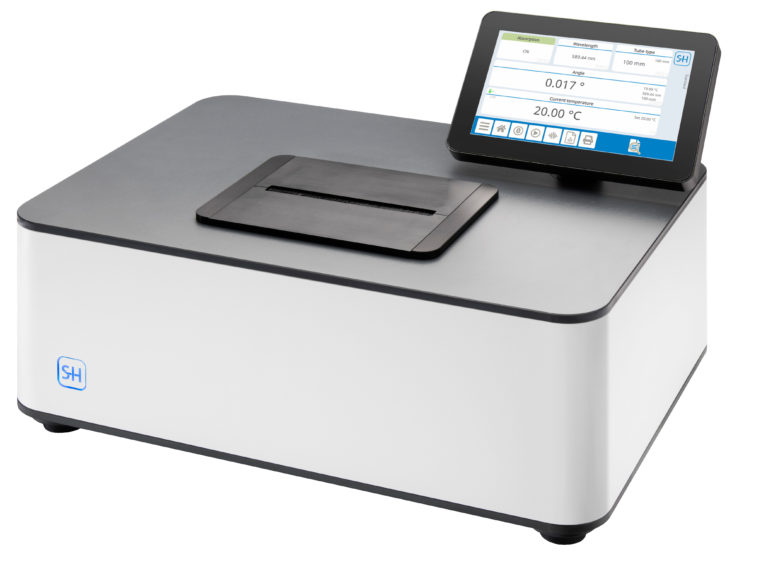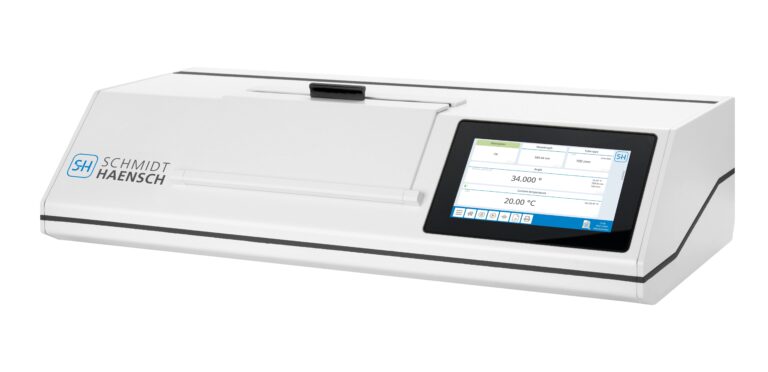Educational
What is polarimetry?
Simply explained, polarimetry is a method of measuring the rotation of the plane of vibration of polarized light as it passes through an optically active substance. The plane of vibration of light is the direction in which the electromagnetic waves of light vibrate as they move through space. Polarized light is light in which the vibrations are aligned in a specific direction.
What is polarization?
In physics, light is described as an electromagnetic wave whose oscillations are oriented in all directions. In polarization, the plane of oscillation of the light is defined, i.e. all oscillations outside a specific plane are filtered out. So-called polarization filters are used for this purpose.
What are optically active substances?
Many organic and inorganic substances, such as sugar, starch and essential oils, are optically active in their crystalline, liquid or dissolved state. This means that they can influence the direction of polarized light. These substances rotate the direction of polarized light by a certain angle.
Optically active substances require an asymmetry center, which means they have a carbon atom with four different substituents. Such molecules are called chiral. They behave to each other like image and mirror image and cannot be brought into alignment by rotation. Our hands are a simple example of this.
If two molecules differ only in the arrangement of their substituents, they are called enantiomers. Both their molecular formula and most of their physical properties, such as melting point and boiling point, are identical. However, they differ in their optical activity, as they rotate linearly polarized light by the same amount, but in different directions (clockwise +; counterclockwise -). They also react differently in chemical reactions and have different modes of action. This is particularly important in the pharmaceutical industry. If there is a 1:1 mixture of a pair of enantiomers, this is not optically active. The optical rotations of the two enantiomers cancel each other out.
How does a polarimeter work?
A polarimeter is used to measure the optical activity of a substance and consists of at least the following parts:
- light source
- sample tube
- polarization filter (analyzer)
- detector
Unpolarized light is polarized by a first polarization filter.The polarized light then passes through the substance to be examined in the sample tube.
The light emerging from the substance is passed through another polarization filter (analyzer), the rotation of which can be changed.
How is the measurement carried out with a polarimeter?
If the second polarization filter is positioned parallel to the first, the direction of oscillation of the polarized light is maintained and reaches the detector (100% transmission). If the second polarization filter is rotated by 90°, the light wave is blocked and no light reaches the detector (0% transmission).
To measure the optical activity (the angle of rotation), the analyzer is rotated to the compensation position. In the compensation position, the rotation of the polarization plane of the light by the sample is fully compensated, which means that the transmitted light is either maximum or minimum. The optical rotation is measured in angular degrees. These devices are therefore referred to as circular polarimeters.
SCHMIDT + HAENSCH uses Faraday modulation as electronic amplification to precisely determine the compensation position (specific alignment of the analyzer). Without mechanical transmission by V-belts or gears, we use a direct coupling of optical encoder and evaluation unit in all measuring instruments.
This ensures high precision over the entire measuring range. In addition, these principles guarantee short measuring times and no mechanical wear. This ensures maximum sensitivity and the fastest compensation time over the entire measuring range. The continuous measurement also enables the monitoring of mutarotation (spontaneous conversion of a chiral molecule between its two enantiomers).

Stability of the measured values
The observed rotation angle depends on the following factors:
- the nature of the sample
- the concentration of the optically active components
- the wavelength of the light
- the sample temperature
the length of the sample tube
In addition, the accuracy of the measurement is influenced by the following components:
- reliability and accuracy of the polarimeter
- the sample preparation (solvent, temperature, homogenization)
- purity of the sample
- stability of the sample,Consistent measurement conditions
What are the areas of application for polarimetry?
Polarimetry is used in research, industry and quality assurance and is used in chemistry, pharmacy, the food industry, biology and biochemistry, environmental sciences and industrial process controls.
Example of polarimetric applications in the pharmaceutical industry
Quality and purity control plays a particularly important role in pharmaceuticals, as they usually consist of enantiomers. Each enantiomer can have different physiological effects. The separation of these enantiomers is therefore very important for most of today’s medicines.
In 1957, the substance thalidomide was launched on the market as a sleeping pill under the name thalidomide. During production, however, not only thalidomide but also the enantiomer 2-(2,6-dioxopiperidin-3yl)iosindole-1,3-dione was produced, which led to malformations in around 10,000 newborns. The drug was withdrawn in 1961.
The most reliable way to determine the enantiomer ratio of a mixture of substances is to use pharmaceutical polarimeters, for example from SCHMIDT + HAENSCH.
Example of polarimetric applications in the sugar industry
In the sugar industry, the aim is to extract only the disaccharide sucrose from sugar cane and sugar beet. Sucrose consists of an a-glucose molecule and a b-fructose molecule. All types of sugar are chiral and therefore optically active. Sucrose has a specific rotation angle of +66.4°, glucose +52.7° and fructose -92°. Sugar solutions are not stable and quickly break down into their components.
The sugar purity analysis is carried out with a combination of polarimeter and refractometer from SCHMIDT + HAENSCH.
More articles about polarimetry applications
Polarimeter for various applications
Sources
Bruice P. (2011) Organische Chemie, 5. edition, Munich, Pearson
Clayden J., Greevs N., Warren S. (2013) Organische Chemie, 2. edition, Heidelberg, Springer-Spektrum, pp. 333 – 343
Do you have any questions?
We will be happy to help you





